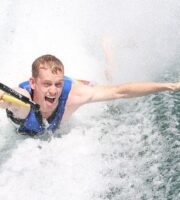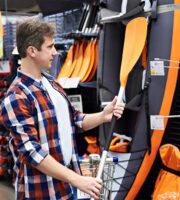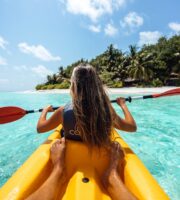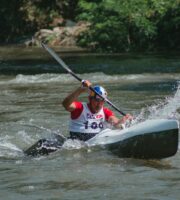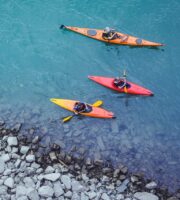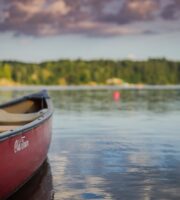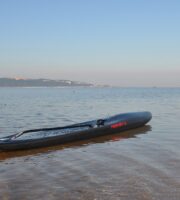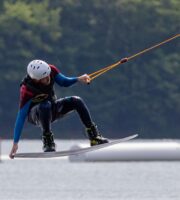Before an athlete can glide through the water with speed and precision, selecting the right equipment is crucial. This choice is not just about the canoe; it encompasses everything from paddles to personal gear. A well-suited canoe should align with the athlete’s weight, height, and competition level, ensuring optimal performance and maneuverability. The paddle, an extension of the athlete’s body, must be chosen with care, considering factors like length, blade shape, and weight. This decision can significantly affect stroke efficiency and endurance.
In competitive canoeing, safety gear is non-negotiable. A high-quality personal flotation device (PFD) and a helmet are essential, especially when navigating challenging courses. Additionally, clothing plays a significant role. Athletes must choose attire that not only protects them from the elements but also offers flexibility and comfort during intense physical exertion.
Developing a Robust Training Plan
Competitive canoeing demands a well-rounded athlete, capable of enduring long races while executing precise and powerful strokes. To build such prowess, a comprehensive training plan is essential. This plan should be multifaceted, incorporating endurance, strength, and technique training, all tailored to the athlete’s specific needs and goals.
Endurance training might include long-distance paddling sessions, complemented by cardiovascular exercises such as running or cycling. Strength and conditioning exercises are equally important, focusing on the core, arms, and back muscles that are vital for powerful strokes. Technique training is where the nuances of the sport come to life. Here, athletes refine their paddling strokes, work on their balance and coordination, and practice maneuvers specific to competitive racing.
Nutrition and recovery are also integral parts of a training plan. A balanced diet fuels the body for both training and competition, while adequate rest and recovery protocols ensure the athlete’s longevity in the sport.
Mental Fortitude: The Competitive Edge
Physical prowess alone doesn’t win races. The mental aspect of competitive canoeing is just as critical. Athletes must cultivate a strong, focused mindset to handle the pressures of competition. This involves setting realistic yet challenging goals, developing strategies to manage stress and anxiety, and using visualization techniques to mentally rehearse races.
Engaging with a coach or mentor can provide invaluable guidance in mental preparation. A coach’s experience can offer insights into race strategies, mental resilience techniques, and managing the emotional highs and lows of competitive sports.
Exercises and training
- Endurance Training:
- Long-distance paddling
- Running or jogging
- Cycling
- Swimming
- Strength Training:
- Weight lifting (focusing on upper body and core)
- Resistance band exercises
- Bodyweight exercises like push-ups and pull-ups
- Core strengthening exercises
- Technique Training:
- Specific paddle stroke practice
- Balance and coordination drills on the canoe
- Turning and maneuvering techniques
- Flexibility and Mobility:
- Yoga or Pilates
- Dynamic stretching routines
- Foam rolling sessions
- Speed Workouts:
- Sprint intervals in canoe
- High-intensity interval training (HIIT) on land
- Short, intense paddling sessions focusing on speed
- Recovery Techniques:
- Cool-down paddling
- Stretching post-training
- Restorative yoga
- Adequate sleep and rest days
- Mental Training:
- Visualization exercises
- Breathing techniques
- Mindfulness and meditation practices
- Cross-Training Activities:
- Other water sports like kayaking or rowing
- CrossFit or circuit training
- Hiking or outdoor endurance activities
Athlete Nutrition
- Balanced Diet: Athletes should focus on a balanced diet rich in carbohydrates, proteins, and healthy fats. Carbohydrates are essential for energy, proteins for muscle repair and growth, and fats for longer-lasting energy.
- Pre-Training Nutrition: Before training, it’s important to consume easily digestible foods to provide quick energy. Foods rich in carbohydrates, such as a banana or a small bowl of oatmeal, are ideal.
- Hydration: Maintaining hydration is crucial. Athletes should drink water throughout the day and may also benefit from sports drinks during longer training sessions to replenish electrolytes.
- Post-Training Recovery: After training, the focus should be on replenishing energy stores and repairing muscles. This includes foods high in protein, like lean meats or plant-based proteins, and carbohydrates.
- Regular Meals and Snacks: Eating at regular intervals helps to maintain energy levels. This includes three main meals and 2-3 healthy snacks per day.
- Avoiding Processed Foods: Minimizing the intake of processed foods, which can be high in unhealthy fats and sugars, is advisable for maintaining optimal health and performance.
- Special Nutritional Needs: Depending on the training intensity and duration, athletes might have higher needs for certain nutrients like iron, calcium, and vitamin D.
- Personalized Nutrition Plan: Consulting a sports nutritionist can be beneficial to create a personalized nutrition plan tailored to specific training needs and goals.
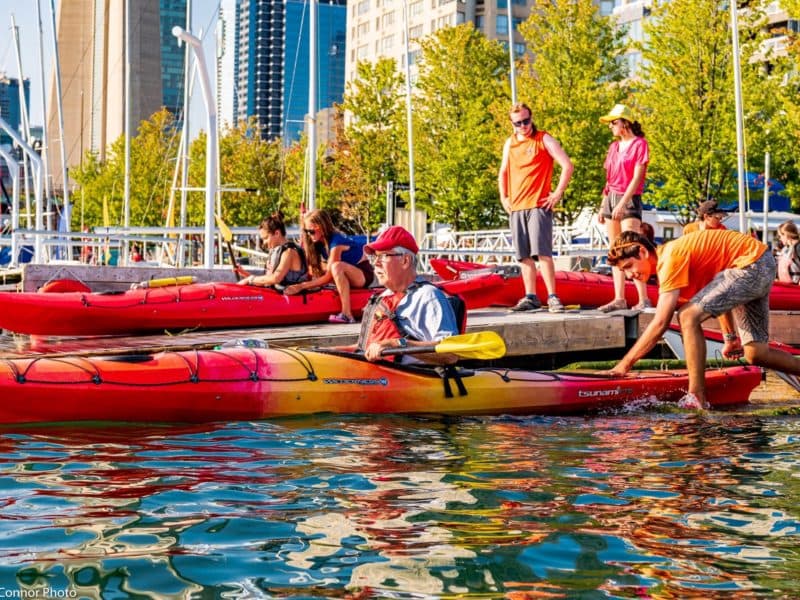
Equipment and Wetsuits
Competitive canoeing demands specialized equipment and attire to enhance performance and ensure safety. The right choice of equipment, including the canoe, paddle, and personal gear, plays a pivotal role in an athlete’s journey in this sport.
Canoe and Paddle Selection
The canoe, the primary equipment in this sport, varies based on the type of competition. Sprint canoes are built for speed and have a slim, aerodynamic design, while slalom canoes are shorter and more agile to navigate through rapid waters and around obstacles. The material of the canoe, typically a lightweight composite, such as carbon fiber or fiberglass, is selected for durability and performance.
Paddles, much like the canoes, are designed to suit different racing conditions. Factors such as blade size, shape, and shaft length are chosen based on the athlete’s size, strength, and paddling style. The weight of the paddle is also a crucial consideration, as a lighter paddle reduces fatigue over prolonged periods.
Wetsuits and Protective Gear
In competitive canoeing, where athletes often face diverse weather and water conditions, wetsuits and protective gear are essential. Wetsuits not only provide warmth in colder waters but also offer a degree of protection against abrasions and impacts. Modern wetsuits are designed to be flexible, allowing for a full range of motion, which is crucial in a sport that demands precision and agility.
Apart from wetsuits, athletes wear helmets and life jackets as safety measures, especially in whitewater canoeing. The helmets are designed to be lightweight yet sturdy, providing protection without hindering movement. Life jackets, or personal flotation devices, are compulsory in many competitions, ensuring the athlete’s safety in the event of capsizing.
Other Essential Gear
Footwear and gloves are other key components of an athlete’s gear. Footwear should provide grip and protect the feet when entering or exiting the water, while gloves can prevent blisters and improve grip on the paddle.
In competitive canoeing, the integration of technology is also evident. Athletes may use GPS devices and heart rate monitors to track their performance and training progress. This data is vital for refining techniques and strategizing for competitions.
Strategy Racing
In the competitive world of canoeing, having a well-planned race strategy is as crucial as physical preparedness. A racer’s approach can significantly influence their performance and outcome in a competition. Here’s a look into various aspects of race strategy in canoeing.
Understanding the Course
A thorough knowledge of the race course is fundamental. Canoeists should be familiar with the layout, including turns, straights, and any potential obstacles. For river races, understanding the current, depth, and potential hazards like rocks or branches is critical. In sprint racing, knowing the exact course layout helps in planning the sprint strategy effectively.
Pacing and Energy Management
One of the key aspects of race strategy is pacing. Canoeists need to manage their energy efficiently throughout the race to avoid burning out too early. This involves starting strong, but at a sustainable pace, and conserving energy for a final sprint. The last part of the race is often where races are won or lost, so having enough energy to push through the end is crucial.
Drafting Techniques
In some canoe races, athletes can take advantage of drafting, where they paddle in the wake of another canoe to reduce resistance. This technique can save energy, but it requires strategic positioning and timing to be effective.
Turning and Maneuvering
Especially in slalom canoeing, how an athlete navigates turns can greatly impact their time. Efficient turning techniques, quick responses, and the ability to anticipate the water’s behavior are key. Practicing turns and understanding the best angles and strokes for each turn type is essential.
Psychological Aspects
Mental strategy plays a big role in racing. Canoeists should have a mental plan for staying focused, dealing with the pressure of competition, and maintaining a positive mindset throughout the race. Visualization techniques can help athletes prepare mentally for the race course and conditions.
Response to Competition
Being aware of competitors’ positions and strategies is important, but over-focusing on competitors can be a distraction. Canoeists should focus primarily on their own race while being adaptable to changes in their competitors’ strategies.
Weather and Water Conditions
Adapting to varying weather and water conditions is crucial. This might mean adjusting stroke techniques in response to wind or current changes, or altering the race plan based on water levels or wave patterns.
Post-Race Analysis
After the race, reviewing performance, including what went well and what could be improved, is important for future strategy development. This can involve analyzing data from fitness trackers or GPS devices, and discussing performance with coaches.
